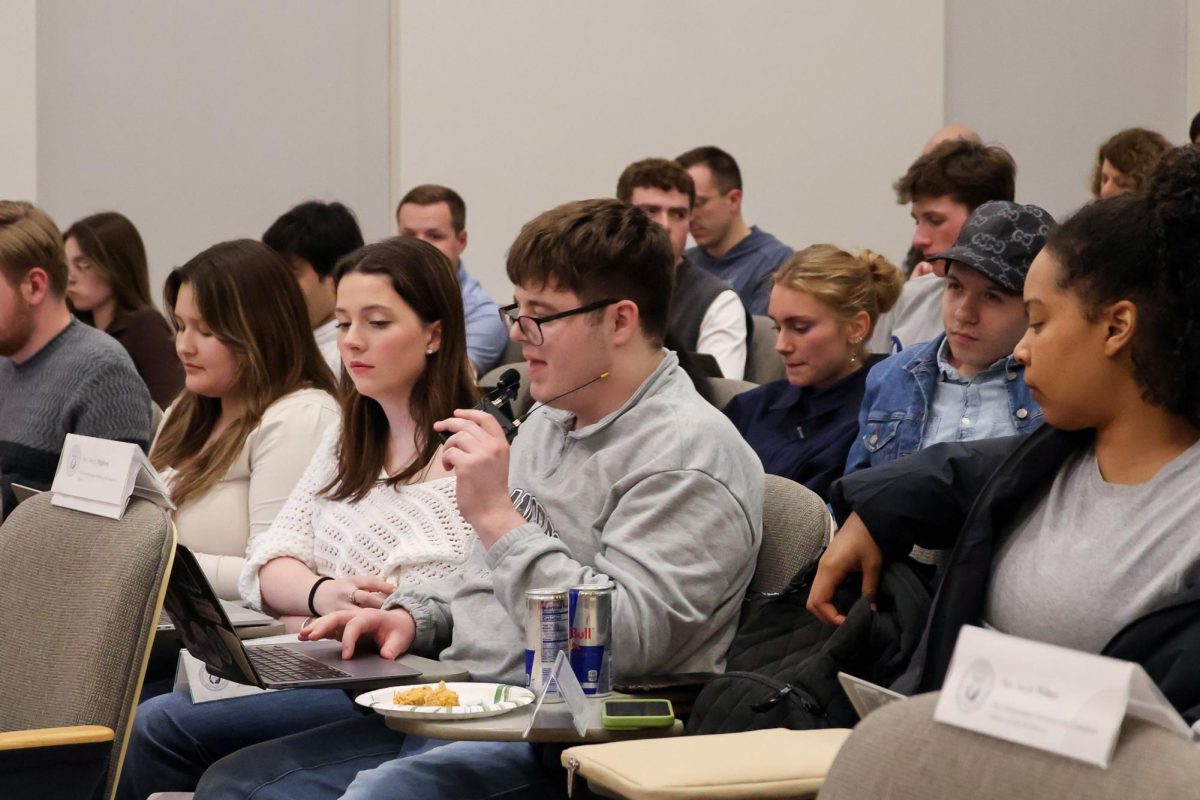Student Association President Arielle Geismar plans to increase her executive cabinet to a total of 39 members for the upcoming academic year, a significant increase from last year but in line with prior SA presidents.
Geismar said she is increasing the size of her cabinet because she believes more cabinet members will reduce the work for each individual and give them more power to help her achieve the policies she is looking to accomplish in office. She said by returning her cabinet to regular membership levels, she will expand her ability to complete her plans like GWHub — an app she hopes to create which will compile all of the online resources the University offers into a singular system — and pushing the University to hire more diverse health professionals in the Student Health Center.
“My goal was for people to own the work they are doing,” Geismar said. “I’m planning on doing a lot, so I want people to feel like they have the autonomy to go out and get things done.”
Former SA President Brandon Hill, who served as president during the 2021-22 academic year, oversaw a cabinet of 44 members, while former SA president Christian Zidouemba originally selected only 14 members during his term but added positions throughout the school year.
Geismar said she created her cabinet positions, like director of sustainability and executive secretary of accessibility, by considering the policy initiatives she is looking to achieve then combining and assigning similar roles and ensuring that she implements the positions that are required by SA bylaws, like treasurer and legislator general. She said she is looking for candidates who are “highly specialized” and passionate in their respective areas and wants to match people to their roles by getting to know candidates instead of filling positions arbitrarily.
“I really want to get to know candidates and understand what issues they’re passionate about, or what areas, and work with them on where they would really excel,” Geismar said.
[gwh_image id=”1190349″ credit=”” align=”none” size=”embedded-img”][/gwh_image]
Cabinet members who worked under Hill’s administration said large cabinets cause confusion among senators and members to work separately on the same issues without notifying each other. Geismar said she is aware of this issue, and she will hold regular meetings with her cabinet, Vice President Demetrius Apostolis’ cabinet and senators to do a “share out” where they meet to discuss what they are working on to reduce this concern.
Geismar said she is also “really excited” to have a close relationship with the SA’s legislative branch to collaborate on policies. She said she has already been in contact with senators that she knows have similar objectives as her.
“I’ve also been working with senators saying like ‘Hey, I know you have this objective, and I want to do something similar,’” Geismar said.
Geismar said “more than enough” people have applied to cover all positions and she anticipates receiving more applications but declined to say exactly how many people applied to join her cabinet.
Zidouemba said a smaller cabinet is “more effective” in getting initiatives done because he was able to personally know his team and what they were working on. He said he was satisfied with his cabinet and he knows having a larger one would “not be feasible” because of his vision for the SA but understands that everyone’s experience is different based on the individual.
“Having a small cabinet gives you the privilege to get to know people in your team one on one and to be able to ensure that it’s efficient overall,” Zidouemba said.
Zidouemba began his term with a 14-member cabinet with eight executive secretaries and no assistant legislator generals or assistant secretaries or directors but added 13 positions like director of inventory and director of external relations throughout the year, according to a document Zidouemba provided detailing the names and positions of his cabinet members. He said he added positions throughout the school year because he believes any student who wants to participate in helping to make an impact on campus should have the opportunity to do so.
Zidouemba said he “strongly believed” that Hill’s administration was too “hectic” because Hill had many vacancies due to the large number of available positions. Zidouemba said he had an almost-full cabinet going into last summer, but it was difficult to fill all positions after the mass resignation of cabinet members following some of their votes to remove him from the presidency last July.
Zidouemba said he also found people tend to leave the SA in the middle of the year because it’s “not what they expected it to be” and they lose motivation. He said people also left because they had other professional opportunities, like interning on Capitol Hill.
“It takes a while to fill up all these positions,” Zidouemba said. “But how do you motivate people to keep doing the work? It’s one thing to have a position and it’s another to have people do things at the same time.”
Keanu Rowe, Zidouemba’s former chief of staff, said there was never a period of time throughout Zidouemba’s administration where people filled all open cabinet positions, but it was easier to fill the positions in the summer before students were busy with other obligations such as internships and school work.
Rowe said while the cabinet included a “great group of people,” he found it difficult to apply their passion and desire to serve because of the “politics” and the bureaucratic nature of the SA. He also said while he was originally “on board” with a smaller cabinet, he saw members were overwhelmed and needed assistance and that by the end of the school year, he was satisfied with Zidouemba’s cabinet because of the increase in members.
“I do think that learning from the past year, if we had that heading into the school year, I think things could have been a little better,” Rowe said.








